L-methionine could be used to supplement research diets
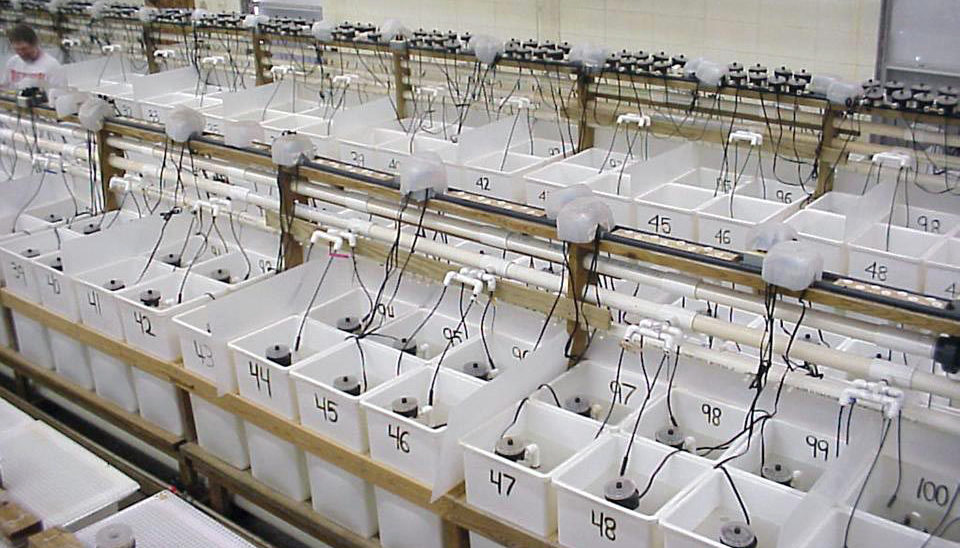
The determination of methionine requirement is a common research topic for most aquatic organisms, both fish and marine penaeid shrimp. The impetus behind this effort is replacement of fishmeal due to its low and/or variable methionine content of grain-based protein sources.
Previous research and field observations indicated high variability in methionine requirements. This variability was largely attributed to species, system, dietary and analytical differences.
A typical concern with the use of supplements has regarded the form by which methionine is introduced to the diet: crystalline or protein-bound methionine. This concern was addressed in a 1995 study by the main author focused on lysine. Could methionine requirement research be undertaken in a similar manner?
Experimental design
The methionine research was conducted at the Texas AgriLife Research Mariculture Laboratory at Port Aransas, Texas, USA, with juvenile Litopenaeus vannamei. The authors undertook two simultaneous titration trials in which methionine was supplemented as either L-methionine or covalently attached to isolated soy protein.
For the crystalline diets, graded levels of L-methionine were added to a soybean-based basal diet with 25 percent crude protein. The basal diet was adequate in all essential amino acids, with the exception of methionine.
For the covalent diets, the same basal diet was blended with a methionine-replete diet with 1.016 percent methionine. Formulated levels in diets varied from 0.294 to 1.016 percent with the exception of a covalent diet containing 1.016 percent EAA, with the exception of one diet containing 1.016 percent methionine.
The actual levels of methionine varied only slightly from formulated levels. All diets were subjected to methionine leaching analysis. Eight shrimp were stocked in each experimental tank at a replication of eight tanks per dietary treatment. Shrimp were fed 15 times daily for 28 days.
Results
Negligible leaching of methionine was observed for all diets, but increased slightly in samples taken from the crystalline diets at five and 60 minutes. These results indicated that crystalline supplementation delivered methionine to the shrimp gut if offered at the high feeding rate of 15 times daily.
Further results are shown in Figs. 1 and 2. For the covalent diets, a methionine requirement of 0.45 percent of diet was estimated using the first four treatment means. Subsequent inhibition analysis showed good fit for all six treatment means, with the point of inhibition estimated at 0.55 percent of diet. For crystalline diets, the requirement level was estimated at 0.66 percent of the diet. No significant difference in survival was shown in either trial.
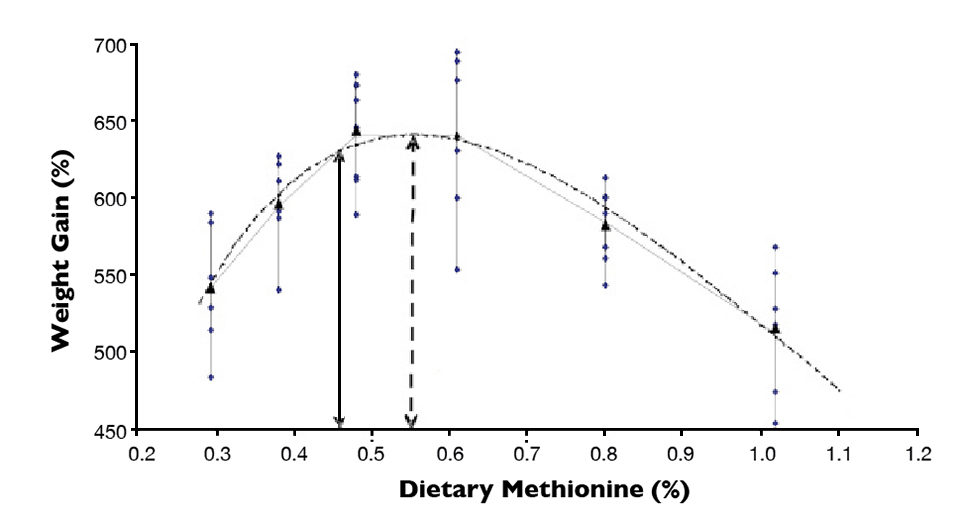
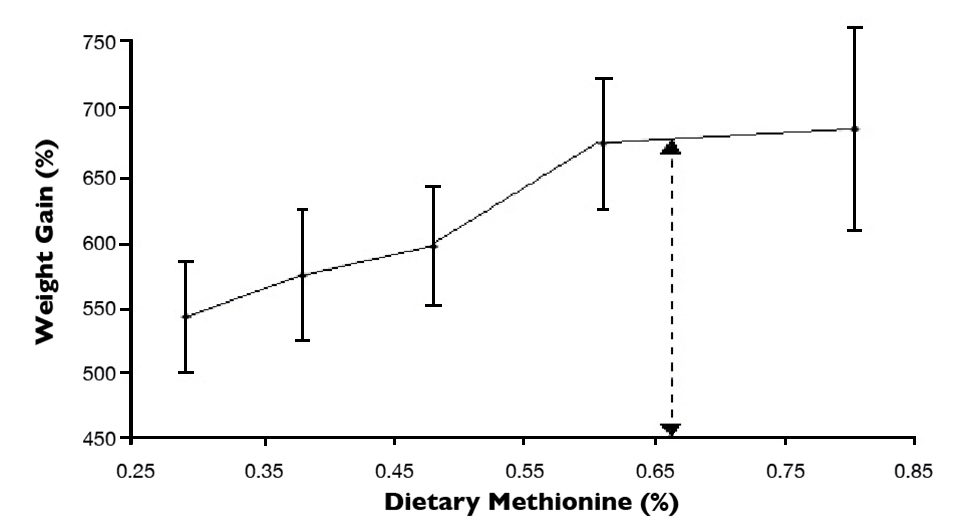
The minor leaching of methionine from both diet types indicates that L-methionine could be used to supplement research diets. However, the binders used in this study – sodium hexametaphosphate, alginate and wheat starch – were different from those used in commercial feeds. It is inferred that leaching could be problematic at feeding rates lower than 15 times/day.
The Texas AgriLife Research Mariculture Laboratory has shown that the use of mineral chelates of methionine significantly lowered leaching compared to that of DL-methionine. The results from this study, which indicated methionine requirement levels much lower than previously thought, ultimately require further testing using commercial binders and/or mineral chelates of methionine.
The apparent inhibition of weight gain at levels of covalently attached methionine above 0.55 percent was a surprise and indicated possible toxicity and/or availability issues. The lower methionine requirement shown for covalent diets could reflect differences in the assimilation of L-methionine and methionine covalently attached to protein.
(Editor’s Note: This article was originally published in the March/April 2010 print edition of the Global Aquaculture Advocate.)
Authors
-
Joe M. Fox, Ph.D.
Texas A & M University -Corpus Christi
6300 Ocean Drive
Corpus Christi, Texas 78412 USA[117,100,101,46,99,99,117,109,97,116,64,120,111,102,46,101,111,106]
-
Addison L. Lawrence, Ph.D.
Texas AgriLife Research Mariculture Laboratory
Port Aransas, Texas, USA -
Susmita Patnaik
Texas AgriLife Research Mariculture Laboratory
Port Aransas, Texas, USA -
Ian Forster, Ph.D.
The Oceanic Institute
Waimanalo, Hawaii, USA -
Zhi Yong Ju
The Oceanic Institute
Waimanalo, Hawaii, USA -
Warren Dominy, Ph.D.
The Oceanic Institute
Waimanalo, Hawaii, USA
Tagged With
Related Posts
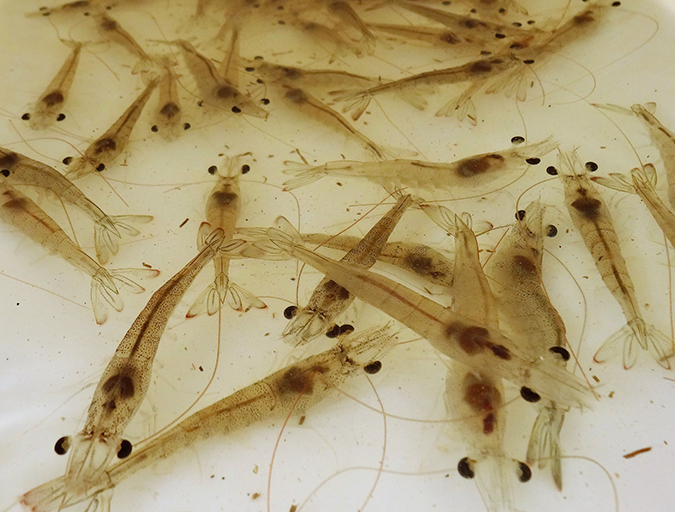
Health & Welfare
Effect of dietary methionine on Pacific white shrimp juveniles
This study tested five diets formulated with increasing levels of methionine (Met) and Met + cysteine (Cys) and their effect on growth performance of juvenile Pacific white shrimp stocked at 50, 75 or 100 animals/m2 in a green water system.
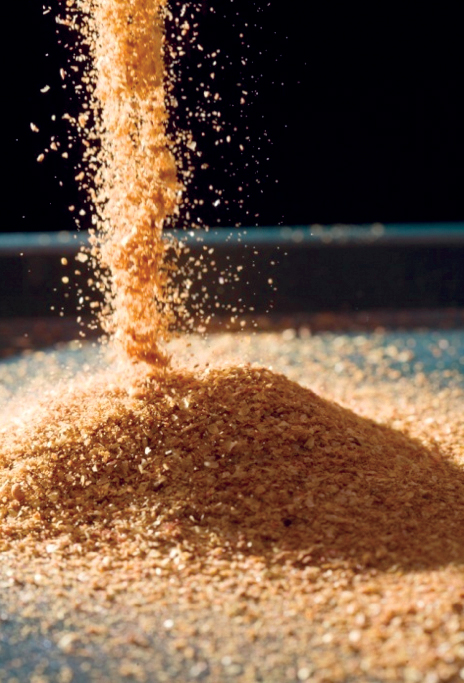
Aquafeeds
A look at corn distillers dried grains with solubles
Corn distillers dried grains with solubles are an economical source of energy, protein and digestible phosphorus to reduce feed costs and fishmeal usage.
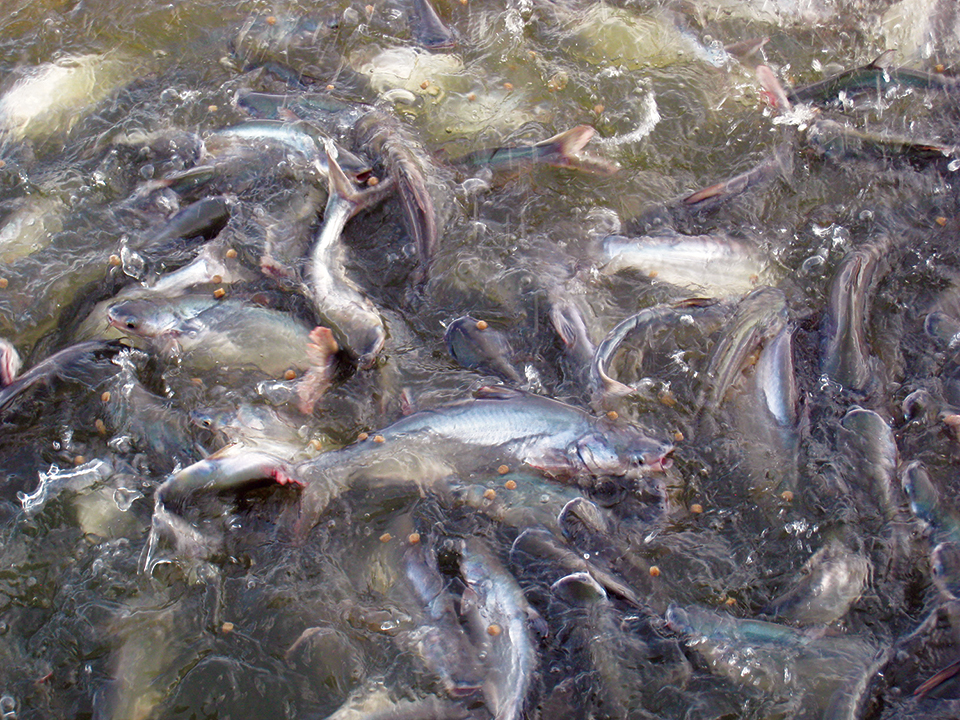
Health & Welfare
Amino acid supplementation reduces protein levels in pangasius diets
Trials show that supplementation with amino acids could reduce protein levels from a typical 28 percent to 23 percent in pangasius diets.
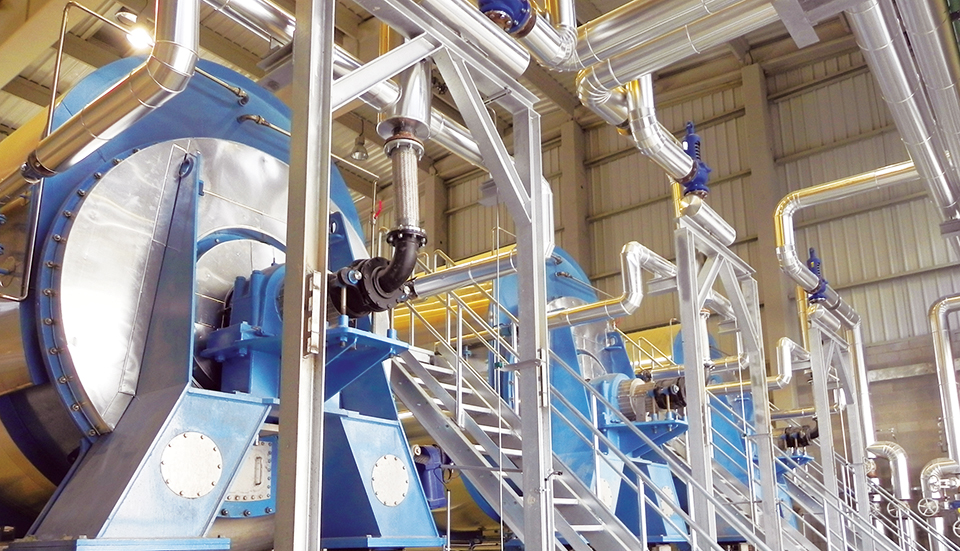
Aquafeeds
Animal byproduct concentrates useful tools in formulation
With the market volatility of fishmeal, as well as rising sustainability concerns, the aquaculture industry is seeking sources of protein, such as animal byproduct concentrates, to substitute for fishmeal.


